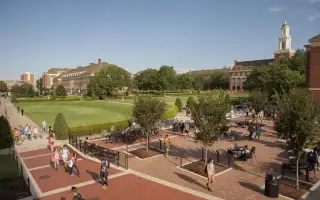A Growing Number of States are Spending Less on Public College Students. This Chart Shows How Much

Twenty-two states reduced the money they spent per student on public colleges in 2017.
That’s up from the 17 states that saw drops in 2016 and the 10 from 2015, according to an annual report published today that tracks state appropriations and tuition revenue at public colleges.
Altogether, state and local appropriations for public colleges and universities totaled $94.5 billion in fiscal year 2017, up about 2% from fiscal year 2016.
Yet despite five straight years of annual spending increases, state colleges and universities still have not recovered from the Great Recession, the report finds. In fact, only six states spend more now on a per-student basis than they did in 2008, and total per-student funding in 2017 is actually $2,000 lower, in real dollars, than before the 2001 dot-com crash, according to the report, published by the State Higher Education Executive Officers Association.
"It's really the combined effect of the last two recessions," said Sophia Laderman, senior policy analyst at SHEEO and an author of the report.
As a result of the shifts in public spending, revenue from tuition and fees has made up an increasingly larger chunk of colleges’ budgets. For the first time in 2017, the report found, more than half of all states—28—relied more heavily on tuition dollars than on government appropriations to fund public systems of higher education.
As may seem obvious to any family paying for a public college education, students now bear a much larger share of the burden than in previous generations. At public colleges, net revenue from tuition is up 37% since its pre-recession high point (in 2008), and has nearly doubled over the past 25 years. Student tuition now makes up about 46% of public colleges' revenue—and SHEEO predicts that during the next economic downturn, it will pass 50%.
In general, states' per-student spending often falls during recessions because college enrollment and healthy economies tend to be counter-cyclical: It’s common for people to remain in school or return to college because of poor job markets. While current college enrollment has shrunk from its 2012 peak, it is still above where it was in 2008—and state funding, in most cases, hasn’t kept up with today’s additional students.
College enrollment and funding, of course, varies widely by state. In Connecticut, for example, enrollment jumped 5.5% last year, which may help explain why the state's per-student funding fell by nearly 13% between 2016 and 2017—more than any other state. (SHEEO calculates enrollment by using a full-time equivalent calculation, not the raw number of enrolled students.)
For other states, the critical factor may be economic: In Louisiana, Oklahoma, and West Virginia, tax revenue relies heavily on oil extraction, and falling prices have strained state budgets, says Andy Carlson, vice president of finance and member services at SHEEO.
South Dakota's per-student spending has risen, meanwhile, boosted by a 25% jump in contributions to the community college system in fiscal year 2017.
See a state-by-state breakdown below. In addition to using the full-time equivalent calculation, the report's authors have adjusted the per-student spending figure based both on states' cost of living and on a given state's enrollment mix—to account for states that, for example, have a higher share of students enrolled in lower-cost community colleges.